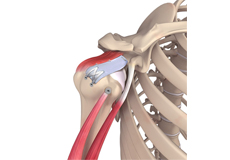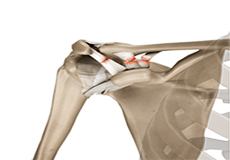Shoulder
Shoulder Anatomy
The shoulder is the most flexible joint in the body enabling a wide range of movements including, forward flexion, abduction, adduction, external rotation, internal rotation, and 360-degree circumduction.
Thus, the shoulder joint is considered the most insecure joint of the body but the support of ligaments, muscles and tendons function to provide the required stability.
Bones of the Shoulder
The shoulder is a ball and socket joint made up of three bones, namely the humerus, scapula and clavicle.
The end of the humerus or upper arm bone forms the ball of the shoulder joint. An irregular shallow cavity in the scapula called the glenoid cavity forms the socket for the head of the humerus to fit in. The two bones together form the glenohumeral joint, which is the main joint of the shoulder.
The scapula is a flat triangular-shaped bone that forms the shoulder blade. It serves as the site of attachment for most of the muscles that provide movement and stability to the joint. The scapula has four bony processes - acromion, spine, coracoid and glenoid cavity. The acromion and coracoid process serve as places for attachment of the ligaments and tendons.
The clavicle bone or collarbone is an S-shaped bone that connects the scapula to the sternum or breastbone. It forms two joints: the acromioclavicular joint, where it articulates with the acromion process of the scapula, and the sternoclavicular joint where it articulates with the sternum or breast bone. The clavicle also forms a protective covering for important nerves and blood vessels that pass under it from the spine to the arms.
Soft Tissues of the Shoulder
The ends of all articulating bones are covered by smooth tissue called articular cartilage which allows the bones to slide over each other without friction enabling smooth movement. Articular cartilage reduces pressure and acts as a shock absorber during movement of the shoulder bones.
Extra stability to the glenohumeral joint is provided by the glenoid labrum, a ring of fibrous cartilage that surrounds the glenoid cavity. The glenoid labrum increases the depth and surface area of the glenoid cavity to provide a more secure fit for the half-spherical head of the humerus.
Ligaments of the Shoulder
Ligaments are the thick strands of fibers that connect one bone to another. The ligaments of the shoulder joint include:
- Coraco-clavicular ligaments: These ligaments connect the collarbone to the shoulder blade at the coracoid process.
- Acromio-clavicular ligament: This connects the collarbone to the shoulder blade at the acromion process.
- Coraco-acromial ligament: It connects the acromion process to the coracoid process.
- Glenohumeral ligaments: A group of 3 ligaments that form a capsule around the shoulder joint, and connect the head of the arm bone to the glenoid cavity of the shoulder blade. The capsule forms a water-tight sac around the joint. Glenohumeral ligaments play a very important role in providing stability to the otherwise unstable shoulder joint by preventing dislocation.
Muscles of the Shoulder
The rotator cuff is the main group of muscles in the shoulder joint and is comprised of 4 muscles. The rotator cuff forms a sleeve around the humeral head and glenoid cavity, providing additional stability to the shoulder joint while enabling a wide range of mobility.
The deltoid muscle forms the outer layer of the rotator cuff and is the largest and strongest muscle of the shoulder joint.
Tendons of the Shoulder
Tendons are strong tissues that join muscle to bone allowing the muscle to control the movement of the bone or joint. Two important groups of tendons in the shoulder joint are the biceps tendons and rotator cuff tendons.
Bicep tendons are the two tendons that join the bicep muscle of the upper arm to the shoulder. They are referred to as the long head and short head of the bicep.
Rotator cuff tendons are a group of four tendons that join the head of the humerus to the deeper muscles of the rotator cuff. These tendons provide more stability and mobility to the shoulder joint.
Nerves of the Shoulder
Nerves carry messages from the brain to muscles to direct movement (motor nerves) and send information about different sensations such as touch, temperature and pain from the muscles back to the brain (sensory nerves). The nerves of the arm pass through the shoulder joint from the neck.
These nerves form a bundle at the region of the shoulder called the brachial plexus. The main nerves of the brachial plexus are the musculocutaneous, axillary, radial, ulnar and median nerves.
Blood vessels of the Shoulder
Blood vessels travel along with the nerves to supply blood to the arms. Oxygenated blood is supplied to the shoulder region by the subclavian artery that runs below the collarbone. As it enters the region of the armpit, it is called the axillary artery and further down the arm, it is called the brachial artery. The main veins carrying de-oxygenated blood back to the heart for purification include:
- Axillary vein: this vein drains into the subclavian vein
- Cephalic vein: this vein is found in the upper arm and branches at the elbow into the forearm region. It drains into the axillary vein.
- Basilic vein: this vein runs opposite the cephalic vein, near the triceps muscle. It drains into the axillary vein.

Shoulder Pain
Pain in the shoulder suggests a shoulder injury which is more common in athletes participating in sports such as swimming, tennis, pitching and weightlifting. The injuries are caused due to the over usage or repetitive motion of the arms.
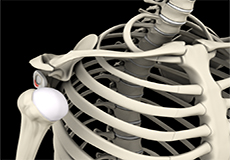
Shoulder Instability
Shoulder instability is a chronic condition that causes frequent dislocations of the shoulder joint.
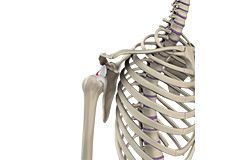
Shoulder Dislocation
Playing more overhead sports and repeated use of the shoulder at the workplace may lead to sliding of the upper arm bone, the ball portion, from the glenoid–the socket portion of the shoulder. The dislocation might be a partial dislocation (subluxation) or a complete dislocation causing pain and shoulder joint instability.
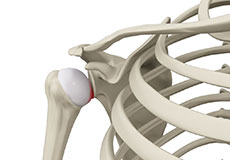
Subluxation
The shoulder is a highly mobile ball and socket joint. The ball of the upper arm bone (humerus) is held in place at the socket (glenoid) of the shoulder blade (scapula) by a group of ligaments. A partial dislocation of the shoulder joint is termed as a subluxation. This means the ball has partially moved out of the glenoid as opposed to a dislocation, where the ball completely moves out of the glenoid.
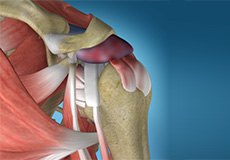
Shoulder Impingement
Shoulder impingement is the condition of inflammation of the tendons of the shoulder joint. It is one of the most common causes of pain in the adult shoulder. The shoulder is a 'ball-and-socket' joint. A ‘ball' at the top of the upper arm bone, humerus, fits neatly into a 'socket’, called the glenoid, which is part of the shoulder blade or scapula.
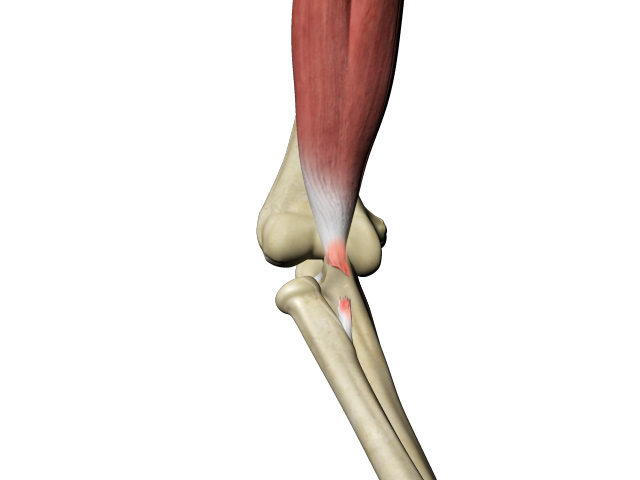
Biceps Tendon Rupture
The biceps muscle is present on the front side of your upper arm and functions to help you bend and rotate your arm.
The biceps tendon is a tough band of connective fibrous tissue that attaches your biceps muscle to the bones in your shoulder on one side and the elbow on the other side.

Biceps Tendonitis
Tendonitis refers to the inflammation of a tendon, which is a band of fibrous connective tissue that attaches a muscle to a bone. Tendonitis can result from repetitive or overuse injuries and can occur during activities such as gardening, carpentry, shoveling, painting, scrubbing, tennis, golfing, skiing, and pitching. People with poor posture or those who avoid stretching before exercise are at a higher risk of developing tendonitis.
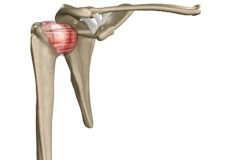
Frozen Shoulder
Frozen shoulder, also called adhesive capsulitis, is a condition characterized by pain and loss of motion in the shoulder joint. It is more common in older adults aged between 40 and 60 years and is more common in women than men.
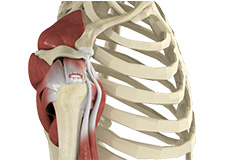
Rotator Cuff Tear
The rotator cuff is a group of tendons in the shoulder joint providing support and enabling a wide range of motion. Major injury to these tendons may result in tear of these tendons, a condition called rotator cuff tear. It is one of the most common causes of shoulder pain in middle aged adults and older individuals.

Shoulder Labrum Tear
The shoulder joint is a “ball and socket” joint that enables smooth gliding and thereby the movements of arms. However, it is inherently unstable because of the shallow socket. A soft rim of cartilage, the labrum, lines the socket and deepens it so that it accommodates the head of the upper arm bone better.
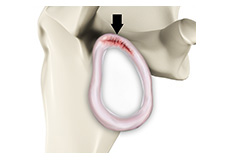
SLAP Tears
The shoulder joint is a ball and socket joint. A 'ball' at the top of the upper arm bone (the humerus) fits neatly into a 'socket', called the glenoid, which is part of the shoulder blade (scapula). The term SLAP (superior –labrum anterior-posterior) lesion or SLAP tear refers to an injury of the superior labrum of the shoulder. The labrum is a ring of fibrous cartilage surrounding the glenoid for stabilization of the shoulder joint.
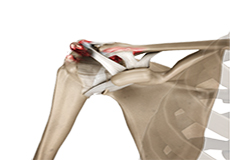
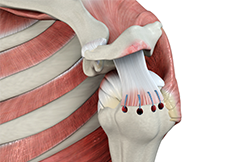
Rotator Cuff Repair
The rotator cuff is a group of tendons in the shoulder that provide support and enable a wide range of motion of the shoulder joint. Major injuries can cause rotator cuff tears. A rotator cuff tear is one of the most common causes of shoulder pain in middle-aged adults and older individuals.
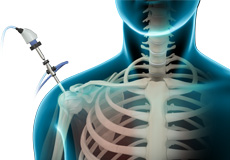
Shoulder Arthroscopy
Arthroscopy is a minimally invasive diagnostic and surgical procedure performed for joint problems. Shoulder arthroscopy is performed using a pencil-sized instrument called an arthroscope. The arthroscope consists of a light system and camera to project images onto a computer screen for your surgeon to view the surgical site. Arthroscopy is used to treat disease conditions and injuries involving the bones, cartilage, tendons, ligaments, and muscles of the shoulder joint.
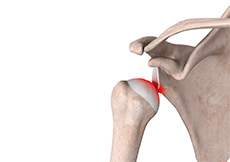
Shoulder Stabilization
Shoulder instability is a chronic condition that causes frequent dislocations of the shoulder joint. A dislocation occurs when the end of the humerus (the ball portion) partially or completely dislocates from the glenoid (the socket portion) of the shoulder. A partial dislocation is referred to as a subluxation whereas a complete separation is referred to as a dislocation. The repeated dislocation of the humerus out of its socket is called chronic shoulder instability.
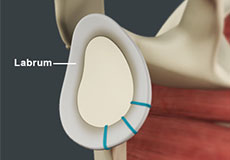
Shoulder Labrum Reconstruction
The shoulder joint is a ball and socket joint. A 'ball' at the top of the upper arm bone (the humerus) fits neatly into a 'socket', called the glenoid, which is part of the shoulder blade (scapula). The labrum is a ring of fibrous cartilage surrounding the glenoid, which helps in stabilizing the shoulder joint. The biceps tendon is attached inside the shoulder joint at the superior labrum of the joint.
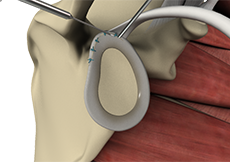
SLAP Repair
Your shoulder joint is a ball and socket joint made up of the upper arm bone, the shoulder blade and the collarbone. The head of the upper arm bone fits into the socket of the shoulder joint known as the glenoid cavity. The outer edge of the glenoid is surrounded by a strong fibrous tissue called the labrum.
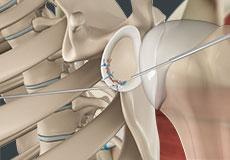
Arthroscopic Bankart Repair
The shoulder joint (glenohumeral joint) is a ball and socket joint, where the head of the upper arm bone (humerus) attaches to the shoulder socket (glenoid cavity). The shoulder socket is extremely shallow and therefore needs additional support to keep the shoulder bones from dislocating. The labrum, a cuff of cartilage that encircles the shoulder socket, helps serve this purpose by forming a cup for the humeral head to move within. It provides stability to the joint, enabling a wide range of movements.
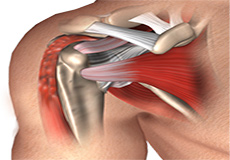
Biceps Tenodesis
Biceps tenodesis is a surgery used to repair a ruptured biceps tendon. Your surgeon makes an incision either near your elbow or shoulder, depending on which end of the tendon is torn. The torn end of the tendon is cleaned and the bone is prepared by creating drill holes. Sutures are woven through the holes and the tendon to secure it back to the bone and hold it in place. The incision is then closed and a dressing applied.
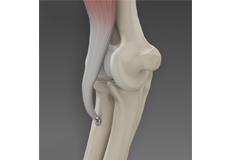
Distal Biceps Repair
The biceps muscle, located in the front of the upper arm allows you to bend the elbow and rotate the arm. Biceps tendons attach the biceps muscle to the bones in the shoulder and in the elbow.

Latarjet Procedure
The shoulder joint provides a wide range of movement to the upper extremity, but overuse or trauma can cause instability to the joint. The Latarjet procedure is a surgical procedure performed to treat shoulder instability by relocating a piece of bone with an attached tendon to the shoulder joint.
